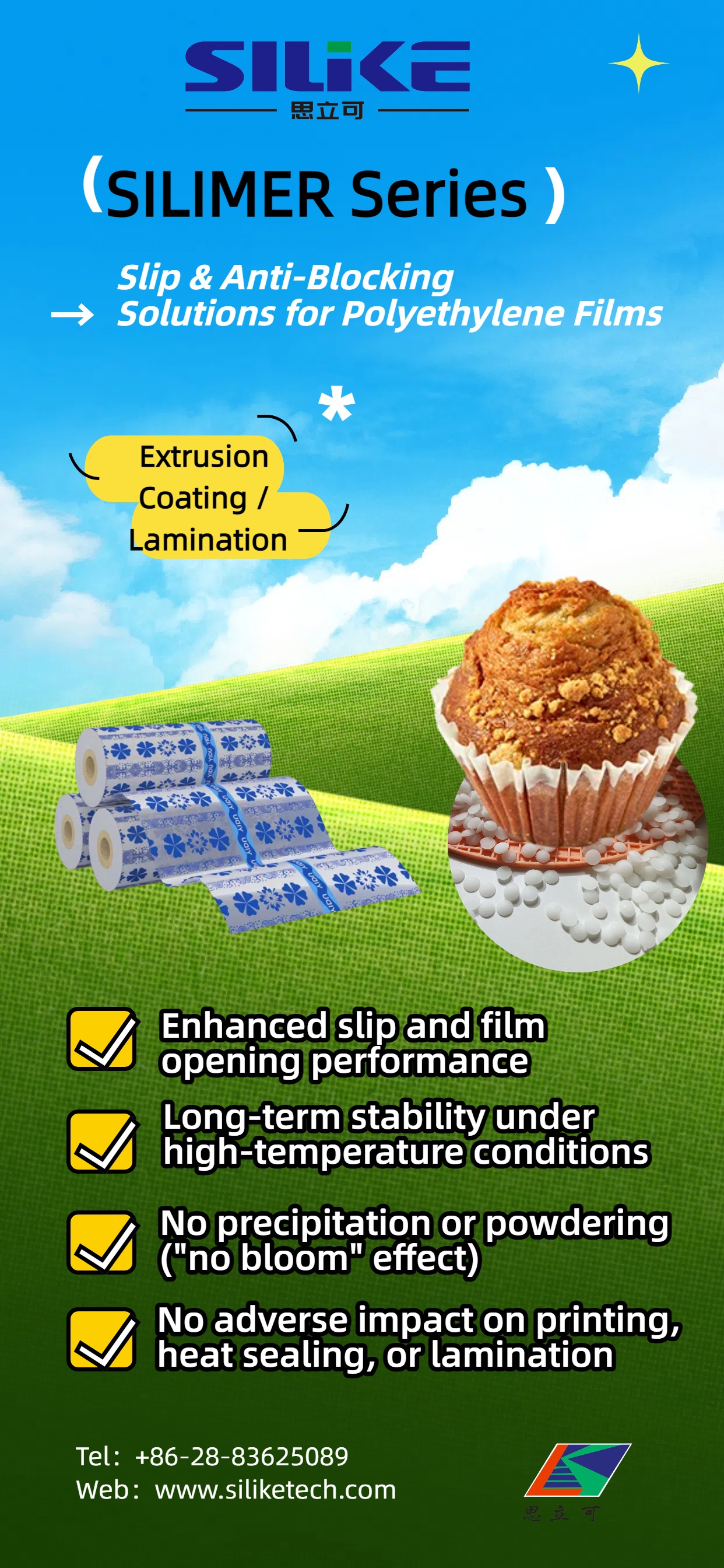Looking to optimize your packaging line or improve the performance of laminated structures? This practical guide explores essential principles, material selection, processing steps, and troubleshooting techniques in extrusion coating (also known as lamination) — a technology widely used in packaging, medical, automotive, and industrial sectors.
What Is Lamination (Extrusion Coating) and How Does It Work?
Lamination, or extrusion coating, is a process that involves coating molten plastic (most commonly polyethylene, PE) uniformly onto substrates such as paper, fabric, non-wovens, or aluminum foil. Using an extrusion device, the plastic is melted, coated, and cooled to form a composite structure.
The core principle is to use the fluidity of molten plastic at high temperatures to achieve tight bonding with the substrate, thereby adding barrier properties, heat-sealability, and durability to the base material.
Key Lamination Process Steps
1. Raw Material Preparation: Select appropriate plastic pellets (e.g., PE, PP, PLA) and substrates (e.g., virgin paper, non-woven fabric).
2. Plastic Melting and Extrusion: Plastic pellets are fed into an extruder, where they are melted into a viscous fluid at high temperatures. The molten plastic is then extruded through a T-die to form a uniform film-like melt.
3. Coating and Compounding: The molten plastic film is precisely coated onto the surface of the pre-unwound substrate under tension control. At the coating point, the molten plastic and the substrate are tightly bonded together under the action of pressure rollers.
4. Cooling and Setting: The compounded material quickly passes through cooling rollers, allowing the molten plastic layer to rapidly cool and solidify, forming a strong plastic film.
5. Winding: The cooled and set laminated composite material is wound into rolls for subsequent processing and use.
6. Optional Steps: In some cases, to improve the adhesion of the laminated layer or enhance surface properties, the substrate may undergo corona treatment before coating.
Substrate and Plastic Selection Guide for Extrusion Coating or Lamination
The materials involved in the lamination process primarily include substrates and laminating materials (plastics).
1. Substrates
|
Substrate Type |
Key Applications |
Key Characteristics |
| Paper / Paperboard | Cups, bowls, food packaging, paper bags | Affects bonding quality depending on fiber structure and surface smoothness |
| Non-woven Fabric | Medical gowns, hygiene products, automotive interiors | Porous and soft, requires tailored bonding parameters |
| Aluminum Foil | Food, pharma packaging | Offers excellent barrier properties; lamination enhances mechanical strength |
| Plastic Films (e.g., BOPP, PET, CPP) | Multi-layer barrier films | Used to combine multiple plastic layers for enhanced functionality |
2. Laminating Materials (Plastics)
• Polyethylene (PE)
LDPE: Excellent flexibility, low melting point, ideal for paper lamination.
LLDPE: Superior tensile strength and puncture resistance, often blended with LDPE.
HDPE: Offers higher rigidity and barrier performance, but is more difficult to process.
• Polypropylene (PP)
Better thermal resistance and rigidity than PE. Ideal for high-temperature sterilization applications.
• Biodegradable Plastics
PLA: Transparent, biodegradable, but limited in heat resistance.
PBS/PBAT: Flexible and processable; suitable for sustainable packaging solutions.
• Specialty Polymers
EVOH: Excellent oxygen barrier, often used as a middle layer in food packaging.
Ionomers: High clarity, oil resistance, excellent sealability.
Common Problems and Solutions in Extrusion Coating and Lamination: A Practical Troubleshooting Guide
1. Adhesion / Blocking Issues
Causes: Insufficient cooling, excessive winding tension, insufficient or uneven dispersion of anti-blocking agent, high ambient temperature, and humidity.
Solutions: Lower cooling roller temperature, increase cooling time; appropriately reduce winding tension; increase or optimize the amount and dispersion of anti-blocking agents (e.g., erucamide, oleamide, silica, SILlKE SILIMER series super slip and anti-blocking masterbatch); improve ambient temperature and humidity in the production environment.
Introducing SILIKE SILIMER Series: High-Performance Slip and Anti-Blocking Masterbatch for Various Plastic Films and Modified Polymers.

Key Benefits Slip and anti-blocking agents for Polyethylene Films
• Enhanced slip and film opening performance
• Long-term stability under high-temperature conditions
• No precipitation or powdering (“no bloom” effect)
• No adverse impact on printing, heat sealing, or lamination
• Improves melt flow and dispersion of pigments, fillers, and functional additives within the resin system.
Customer Feedback – Extrusion Coating or lamination Applications Solutions: Plastic film manufacturers using lamination and extrusion coating processes report that SILIMER slip and anti-blocking agents effectively resolve die lip sticking issues and significantly improve processing efficiency in PE-based coatings.
2. Insufficient Peel Strength (Delamination):
Causes: Low substrate surface energy, insufficient corona treatment, too low extrusion temperature, insufficient coating pressure, and mismatch between plastic and substrate.
Solutions: Improve the effect of corona treatment on the substrate; appropriately increase extrusion temperature to enhance the wettability of the melt to the substrate; increase coating pressure; select laminating Materials with better compatibility with the substrate, or add coupling agents.
3. Surface Defects (e.g., specks, fish eyes, orange peel texture):
Causes: Impurities, unmelted material, moisture in plastic raw materials; poor cleanliness of the die; unstable extrusion temperature or pressure; uneven cooling.
Solutions: Use high-quality, dry plastic raw materials; regularly clean the die and extruder; optimize extrusion and cooling parameters.
4. Uneven Thickness:
Causes: Uneven die temperature, improper adjustment of die lip gap, worn extruder screw, uneven substrate thickness.
Solutions: Precisely control die temperature; adjust die lip gap; regularly maintain the extruder; ensure substrate quality.
5. Poor Heat-Sealability:
Causes: Insufficient laminated layer thickness, improper heat-sealing temperature, improper selection of laminating material.
Solutions: Appropriately increase the laminated thickness; optimize heat-sealing temperature, pressure, and time; select laminating materials with better heat-sealable properties (e.g., LDPE, LLDPE).
Need Help Optimizing Your Lamination Line or Choosing the Right Additive for Plastic films and Flexible packaging? Connect with our technical team or explore SILIKE’s silicone-based additive solutions tailored for packaging converters.
Our SILIMER Series delivers lasting slip and anti-blocking performance, enhancing product quality, minimizing surface defects, and boosting lamination efficiency.
Say goodbye to issues like white powder precipitation, migration, and inconsistent film properties.
As a trusted manufacturer of plastic film additives, SILIKE offers a comprehensive range of non-precipitation slip and anti-blocking solutions designed to improve the processing and performance of polyolefin-based films. Our product portfolio includes anti-blocking additives, slip and anti-block masterbatches, silicone-based slip agents, high-temperature and stable, long-lasting slip additives, multifunctional process aids, and polyolefin film additives. These solutions are ideal for flexible packaging applications, helping manufacturers achieve enhanced surface quality, reduced film blocking, and improved production efficiency.
Contact us at amy.wang@silike.cn to discover the optimal additive for your plastic films and flexible packaging production needs.
Media Contact
Company Name: Chengdu Silike Technology Co., Ltd.
Email: Send Email
Country: China
Website: https://www.siliketech.com/






